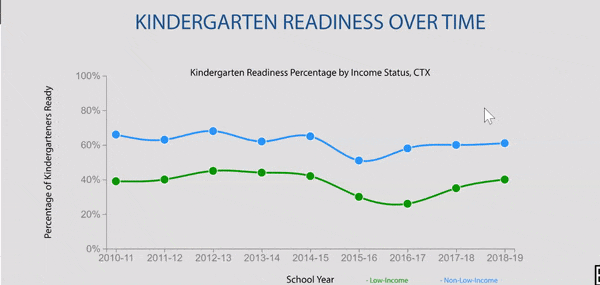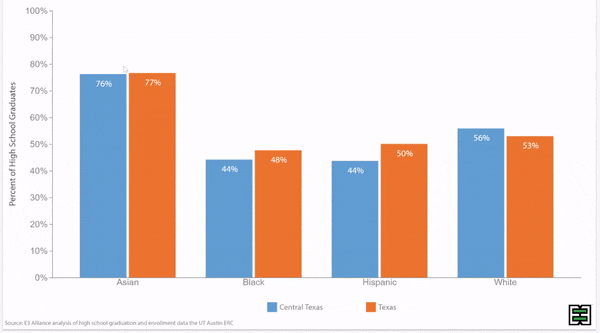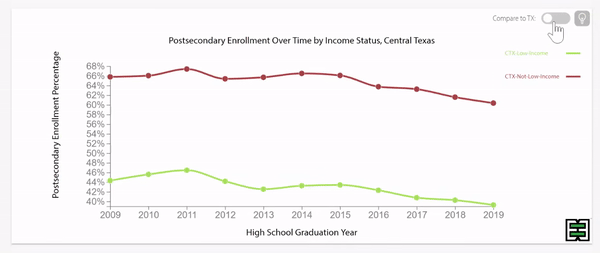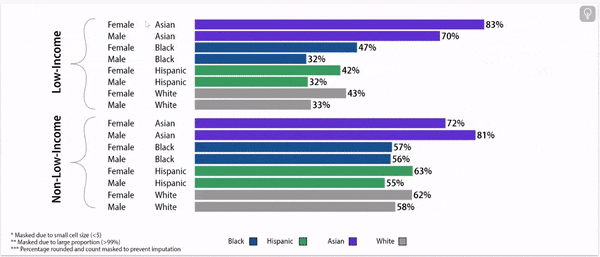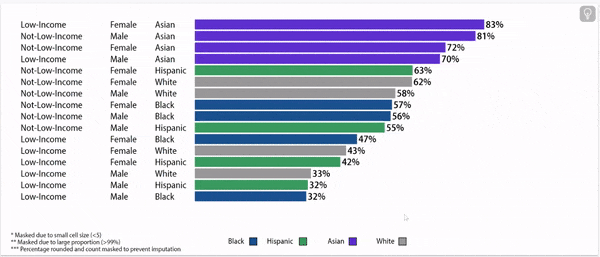Pre-Kindergarten Utilization
The importance of early childhood education and its impacts on later student outcomes presents a dual agenda for the state and region: the need to support public pre-K and improve the quality and consistency of pre-K instructional practice by providers to ensure children gain the greatest benefits.
The Texas legislature has already made important progress to ensure that all eligible four-year-olds have access to full-day pre-K, but our state can accomplish more to increase the quality. Lowering staff-to-student ratios can galvanize the outcomes we all desire. Better outreach to ensure that students enroll in and consistently attend pre-K ensures that communities who have been historically excluded from education systems in Texas receive the supports they need to be successful in their academic journey.
Jump to: Source and cohort information about this data.
More Capacity and Outreach is Needed to Ensure Eligible Students Have Access to Attend Pre-K 3
Pre-K 3 Eligible Enrollment Rate, 2021
Pre-K 4 Eligible Enrollment Rate, 2022
About this data:
The following data are public pre-K utilization rates retrospectively collected at the time of kindergarten enrollment. This lagging data reflect whether a student attended pre-K one year (referred here as pre-K 4 at age 4) and/or two years (referred here as pre-K 3 at age 3) prior to their kindergarten enrollment.
Based on the available data, E3 Alliance defines public pre-K eligibility as it is reported as part of students’ school records. In the charts below, students are counted as eligible for public pre-K if the student comes from a low-income household and/or a student is determined to have emergent bilingual status at the time of kindergarten enrollment. This definition does not capture every student who might be eligible for public pre-K, but it is used as a proxy to most closely measure eligibly from the available data.
For more information about E3’s public pre-k eligibility, please visit our website
here.
Important Notes:
E3 Alliance relies primarily on data from the University of Texas Education Research Center (ERC). There is a delay in data availability due to state approval within the ERC and analysis time. This data pertains to students from within the state of Texas who are eligible for and/or attend public pre-K. Additionally, this data allows for a longitudinal understanding of pre-K eligibility and attendance.
Outcomes that reference data from 2021, 2022, or 2023 do not include San Marcos CISD, due to a data discrepancy.

